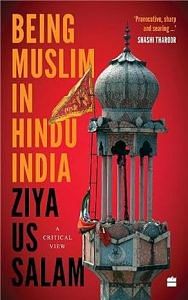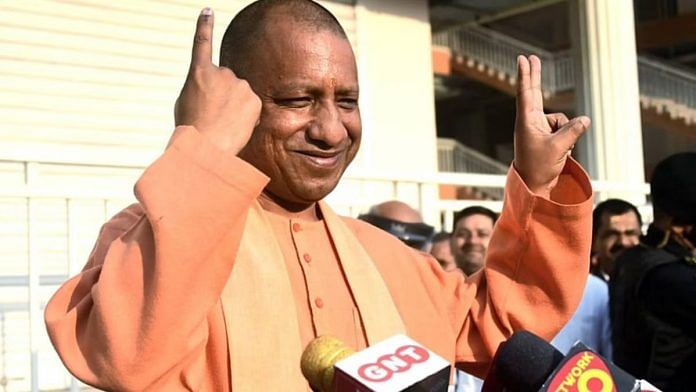Adityanath, not renowned for new building projects, had earlier decided to rename Mughal Sarai, one of the busiest railway junctions in India, after Pandit Deen Dayal Upadhyaya, the BJP ideologue who died there under mysterious circumstances in 1968. It also happens to be the birthplace of former Prime Minister Lal Bahadur Shastri. Earlier too in 1992, the BJP had tried to rename Mughal Sarai. However, with the demolition of the Babri Masjid and the following communal violence, there was little time for rechristening one of the oldest railway stations of the country. Adityanath had no such encumbrances.
The Babri Masjid no longer stood there, and the chief minister also had a thumping majority in the State Assembly. He was free to do as he chose. He then focused his energies on renaming Allahabad, which translates as ‘Abode of Allah’, to Prayagraj, the latter denoting a place of confluence of the rivers Ganga, Yamuna and the mythical Saraswati. However, as historical records will show us, the logic behind the decision to rename the city was at least questionable! The greatest Mughal Emperor Akbar had named the city ‘Illaha-bad’ or ‘Illahi-bas’. ‘Illaha’ is considered a generic term to mean ‘gods’, and ‘Illaha-bas’ translated into ‘abode of Gods’.
Akbar regarded the place as the holy city of Hindus. According to the contemporary chronicler Badauni, when Akbar was informed about the devotion of the Hindus for the sacred site of Sangam and their wish to die there (as attaining death there, it was believed, would mingle their soul with the spirit of God), he instantly decided to rename the place as Illaha-bas, the abode of Gods!10 In other words, the Mughal emperor honoured Hindu sentiments by naming the place thus.
Importantly, he left the age-old name of Prayag, the area of the confluence in the vicinity, completely untouched. That was in the spirit of the tradition of our land. As far as legend is concerned, ‘Ila’ is the name of the mother of Puruvas, the progenitor of the Aila tribe. The Mahabharata also mentions the name Ila as that of a river (variously identified) or as that of a king. ‘Vas’ again means abode. Yet again the meaning comes to be the ‘abode of Ila’! In the age of the Mughals, Prayag and Allahabad coexisted. In New India, Allahabad had to be erased for Prayag to come to the fore! In a comic turn of events in December 2021, the name of popular Urdu poet Syed Akbar Hussain, better known as Akbar Allahabadi, was changed to Akbar Prayagraj on the website of Uttar Pradesh Higher Education Service Commission (UPHESC), an autonomous body under the Uttar Pradesh state government!
Similarly, in the case of Ayodhya and Faizabad, the former name was subsumed under the latter: Adityanath decided to rename the Faizabad district as Ayodhya, completely obliterating Faizabad, again a Muslim-sounding name, from the map. It was indicative of the non-pluralist mindset of medieval times.
As Sharat Pradhan wrote in Daily O: Awadh’s first nawab Saadat Ali Khan, who built Faizabad on the banks of the Ghaghra river in 1730, made no attempt to give any new name to Ayodhya that was always known as the birthplace of Lord Ram. The ancient temple town eventually became a part of Faizabad district, carved out by the British. The upkeep of Ayodhya’s oldest temple—Hanuman Garhi—came from the Nawab’s treasury. This healthy practice continued even after Saadat Ali Khan’s grandson Asaf Ud-daula shifted the capital of Awadh from Faizabad to Lucknow, soon after he inherited the throne in 1775. And significantly, just as ‘Illahabas’ meant ‘abode of the divine’, Faizabad meant a ‘place for the good of all’.
Such profundity of belief, such spirit of mutual respect! That is being replaced by a mantra of segregation and severance, one which focuses on exclusion rather than inclusion. A product of our divisive times, it seeks to sell us all over again, the myth of India’s golden past, the time when our nation was a Sone ki Chidiya (golden bird) until the invaders took it all away. The name changes seek to fulfil that longing of walking back in time to the age when everything was golden, laudable and prosperous, to a utopia we never experienced.
 This excerpt from Ziya Us Salam’s ‘Being Muslim in Hindu India’ has been published with permission from HarperCollins India.
This excerpt from Ziya Us Salam’s ‘Being Muslim in Hindu India’ has been published with permission from HarperCollins India.



